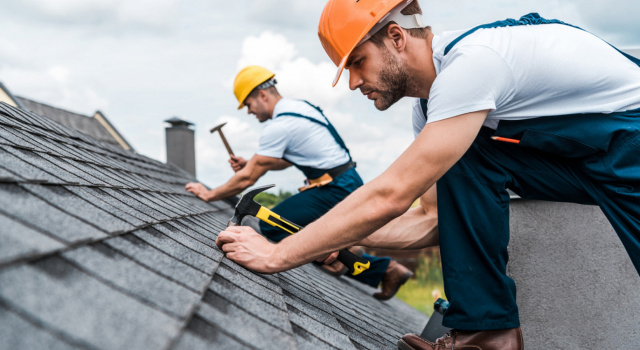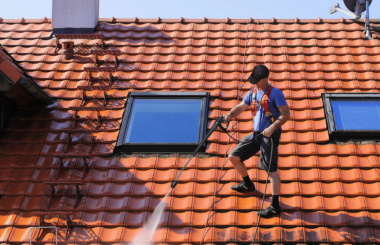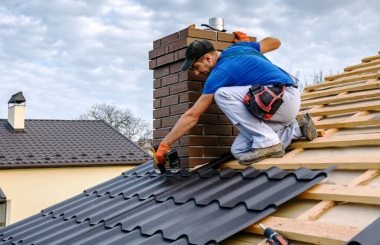Selecting a suitable roofing material is a crucial decision for homeowners, as it directly impacts your home's appearance, durability, and energy efficiency. With numerous options available in the market, making the right choice can be challenging. This blog post will provide the ultimate guide to choosing the right roofing material for your home, considering cost, longevity, and maintenance requirements.
Asphalt Shingles
Asphalt shingles are a popular roofing material made from fiberglass or organic mat coated with asphalt and granules. They are generally for residential roofing due to their affordability, durability, and ease of installation.
Asphalt shingles are available in various colors, textures, and styles, making them a versatile option for home styles. They typically come with a warranty of 20-30 years, although higher-end products may have more extended warranties. While asphalt shingles are a relatively low-maintenance roofing option, they may be more susceptible to damage from extreme weather conditions than other materials, such as metal or tile.
Pros:
- Cost-effective
- Wide range of colors and styles
- Easy installation and repairs
Cons:
- Shorter lifespan compared to other materials (15-30 years)
- Less environmentally friendly
Metal Roofing
Metal roofing is a type of roofing material made from metal pieces or tiles. They are generally for residential and commercial roofing due to their durability, longevity, and energy efficiency.
Metal roofing is available in various materials, including steel, aluminum, copper, and zinc, each with unique benefits and drawbacks. They are often chosen for their ability to resist damage from weather, including wind, hail, and heavy rain, and their fire-resistant properties. Metal roofs are also energy-efficient, as they reflect sunlight and reduce heat absorption, which can help lower energy costs for air conditioning during the summer months. While metal roofs can be more expensive to install than other roofing materials, their long lifespan and low maintenance costs can make them cost-effective.
Pros:
- Long lifespan (40-70 years)
- Energy-efficient
- Low maintenance
Cons:
- Higher initial cost
- Can be noisy during rain and hail
Clay and Concrete Tiles
Clay and concrete tiles are a type of roofing material made from either baked clay or a mixture of cement, sand, and water. They are popular in Mediterranean and Southwestern-style architecture due to their durability and aesthetic appeal.
Clay tiles are typically more expensive than concrete tiles but are also more durable and can last up to 100 years. Concrete tiles are less costly and are available in a broader range of colors and styles. Both types of tiles are heavy and require a sturdy roof structure. Clay and concrete tiles offer excellent protection against weather damage, as they can withstand strong winds, heavy rain, and even hail. They are also energy-efficient, as they can help keep homes cooler in hot climates. However, they can be more challenging to install and repair than other roofing materials, and they require regular maintenance to prevent moss and debris buildup.
Pros:
- Long lifespan (50+ years)
- Fire-resistant
- Energy-efficient
Cons:
- Heavyweight, may require additional roof support
- High initial cost
Wood Shingles and Shakes
Wood shingles and shakes are a type of roofing material made from thin, wedge-shaped pieces of wood that are sawn from a log. Shingles are typically cut from cedar or redwood, while shakes are split from larger tree sections, giving them a thicker and more rustic appearance.
Wood shingles and shakes are a popular roofing option for homes with a natural or historic look, as they blend well with wooded surroundings and give a home a warm and inviting feel. They are also energy-efficient, as they provide good insulation and ventilation. However, wood shingles and shakes require regular maintenance to prevent moisture buildup, which can cause rot and decay. They are also fire-resistant and may be more expensive than other roofing materials. Wood shingles and shakes have a lifespan of around 30-50 years, depending on the wood's quality and maintenance level.
Pros:
- Aesthetically appealing
- Environmentally friendly
- Moderate lifespan (25-30 years)
Cons:
- Requires regular maintenance
- Not fire-resistant unless treated
Slate
Slate is a type of natural stone often used as a roofing material due to its durability, longevity, and attractive appearance. Slate roofing tiles are cut from large slabs of slate rock and are available in various sizes, thicknesses, and colors.
Slate tiles can be installed in multiple patterns, including traditional uniform rows or more complex designs, making them versatile for different architectural styles. One of the main benefits of slate roofing is its longevity, as it can last up to 100 years with proper maintenance. Slate is also fire-resistant and can withstand heavy wind and rain, making it a good choice for areas with harsh weather conditions. However, slate roofing can be expensive to install and requires specialized skills and tools for repair and maintenance. It is also heavy, so it may not be suitable for all roof structures. Despite these drawbacks, slate roofing is popular for homeowners who value durability and aesthetics over short-term cost considerations.
Pros:
- Exceptional longevity (75-100 years)
- Fire-resistant
- Low maintenance
Cons:
- Expensive
- Heavyweight, may require additional roof support
Summary
When selecting the suitable roofing material for your home, consider factors such as cost, lifespan, maintenance requirements, and the climate in your area. Each material has advantages and disadvantages, so weigh your priorities and preferences to make the best decision for your home.
By understanding the different roofing materials available and their unique characteristics, you can make an informed decision that best meets your needs and preferences. Your choice of roofing material can significantly impact your home's appearance, durability, and energy efficiency, making it essential to select the perfect option for your home.
Get Quotes on Roofing Materials Today
Ready to find the ideal roofing material for your home? Click on the link to get quotes about "The Ultimate Guide to Choosing the Right Roofing Material" and start investing in the perfect roof for your home today!







Updated May 04, 2023